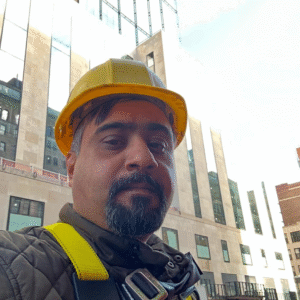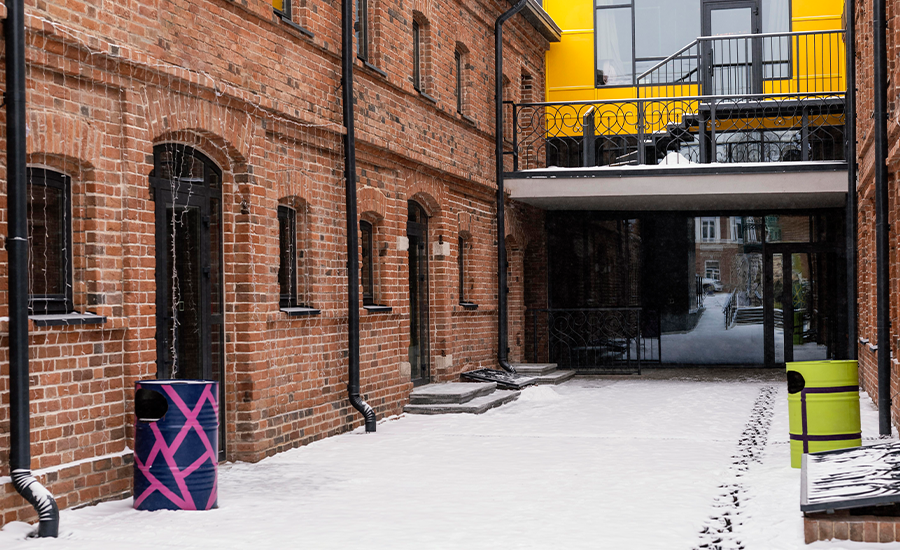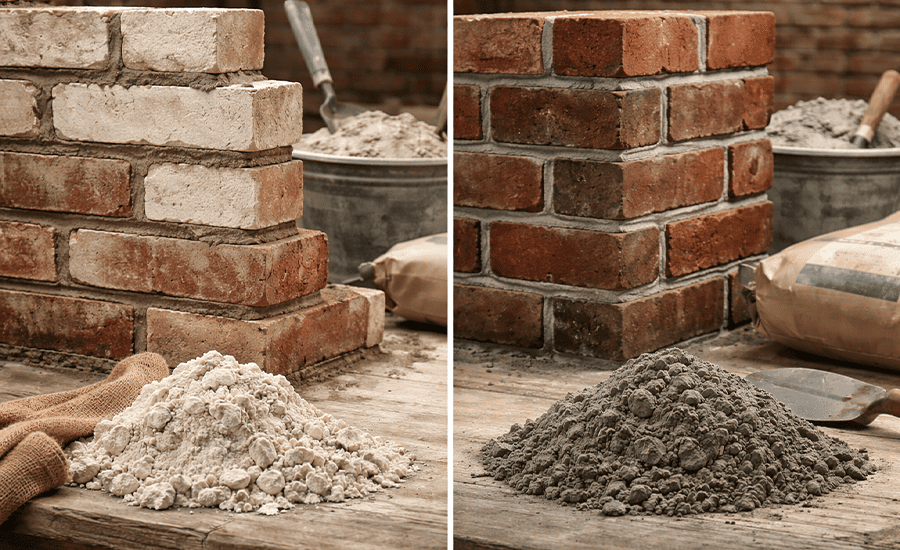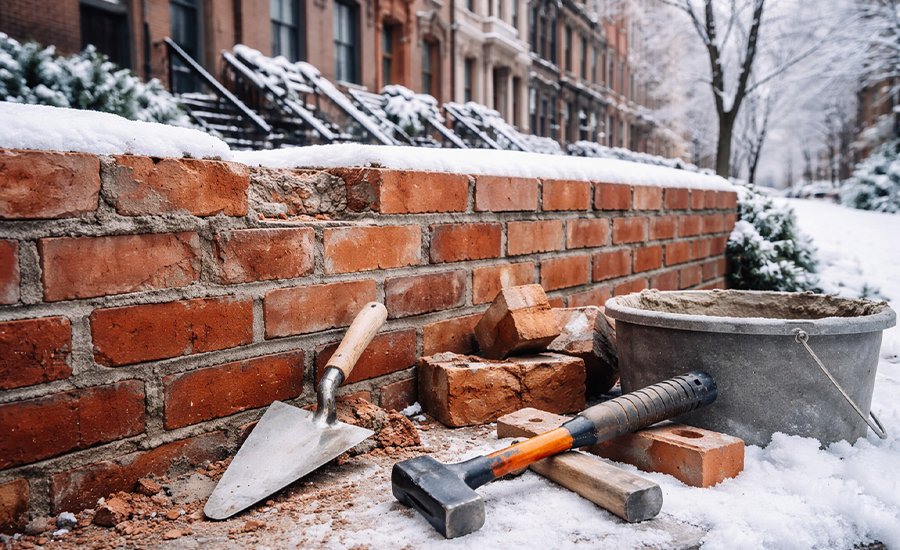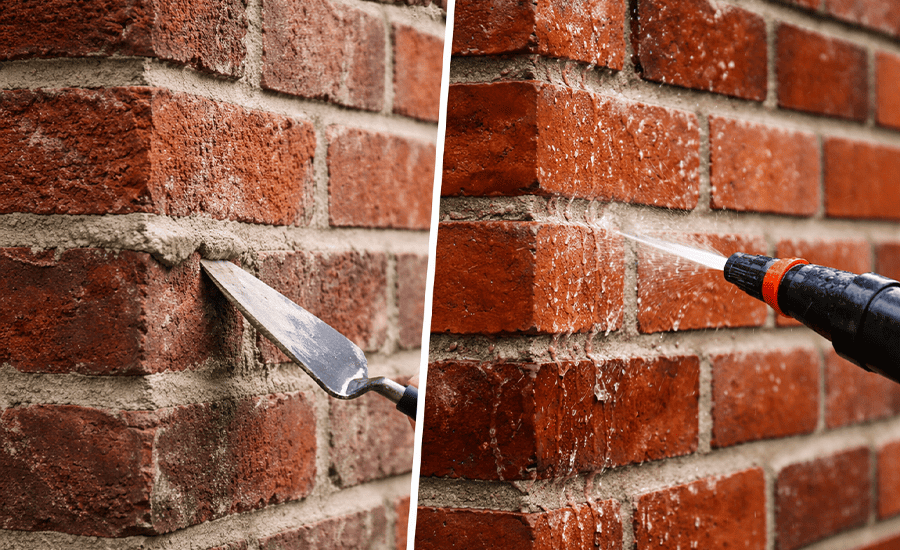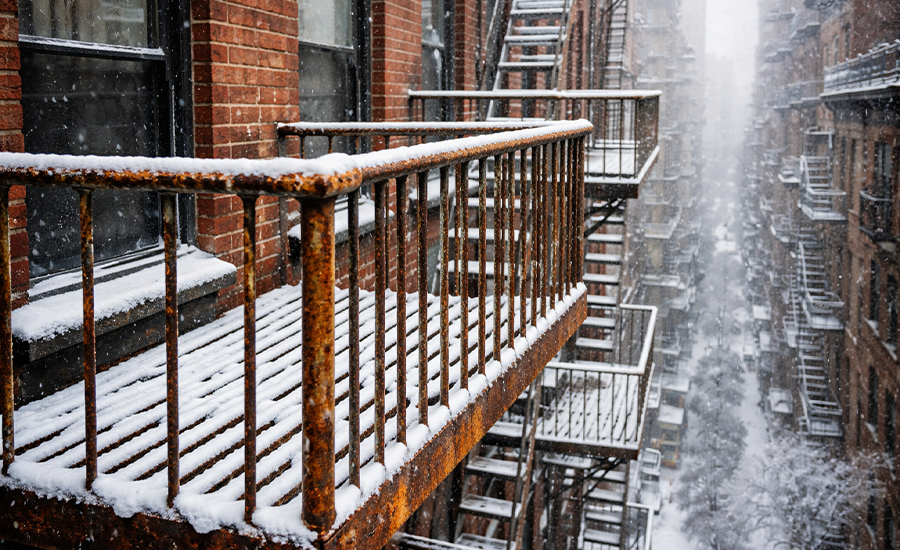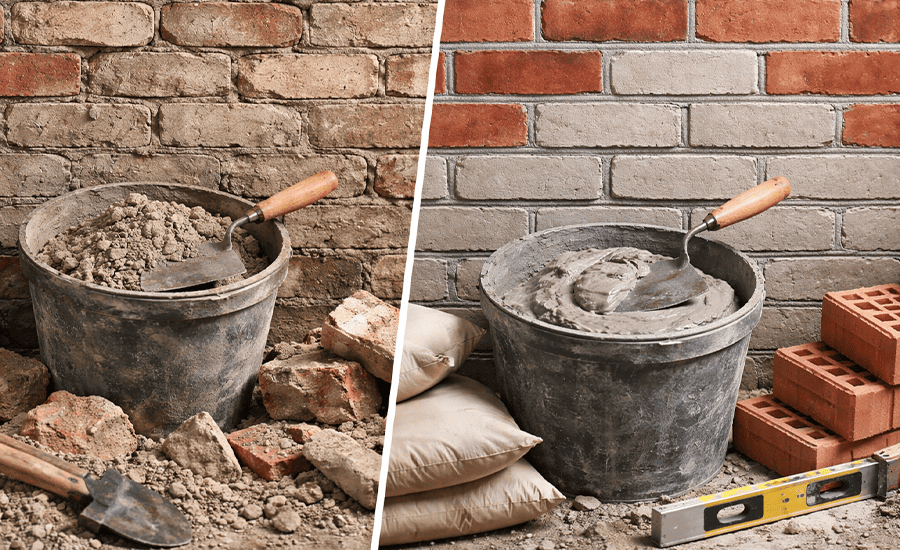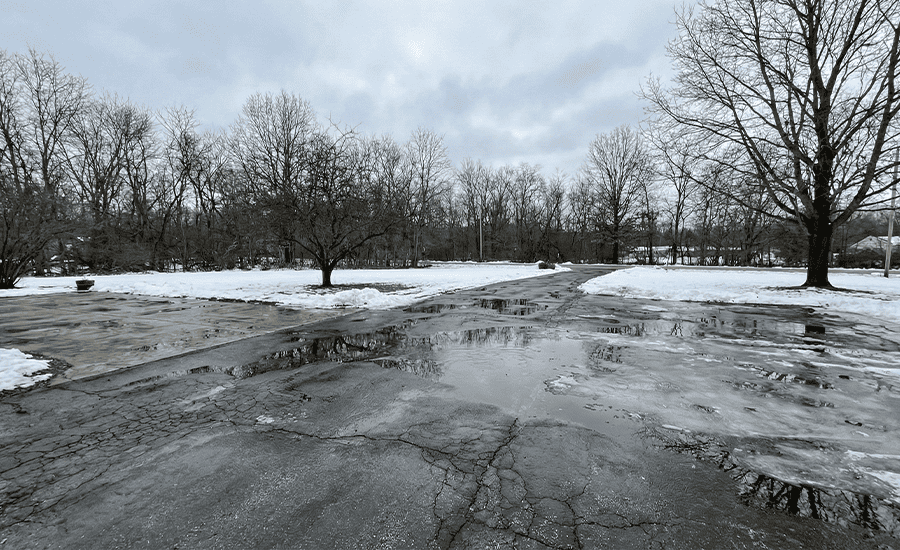Natural and artificial conditions around a mason’s work impact how well and how long mortars keep bricks together. Incoming elements from our environment hurt or improve joints over time, making them less secure and look bad. The way the mortar reacts with temperature, humidity, air quality, moisture, and pollutants makes the joints crack and deteriorate gradually. We must fix or re-point these areas to keep our buildings safe.
Key Environmental Elements Impacting Brick Mortar Joints
Here are the environmental factors that affect brick pointing:
Weather Conditions
While extreme temperatures are hardly new, they can also affect how mortar cures when applied, leading to improper bond and structure. Also, rain or snow may weaken the mortar, rendering it washed out or not set at all.
If you’re dealing with icy conditions, you’ll find our blog can brick pointing prevent frost damage in cold climates? especially useful.
Moisture
Excess moisture in the surrounding environment or poor drainage can cause mortar joints to deteriorate faster. Constant wet conditions can create mold, destroy the brick wall’s supporting location, and weaken the bonds of the glue.
Air Quality
Pollution, including soot, dirt, and other particulate matter in the air, can accumulate on brick surfaces and within mortar joints. It may cause discoloration, speed up wear, and decrease the bonding power of the mortar.
Wind
High wind speeds can dry out mortar too quickly, leading to cracks and an incomplete cure. This accelerates wear and reduces the overall durability of the pointing.
UV Radiation
The mortar can dry out, weaken from prolonged exposure to sunlight and ultraviolet rays, and crack. UV rays also degrade the color of the mortar, making the joints look faded or inconsistent.
Salt and Chemicals
Salt from ice melt or road treatment products can corrode bricks and mortar, leading to efflorescence or structural damage. Over time, chemical exposure from cleaning agents or environmental pollutants can break down the mortar.
Building Movement
Settling the foundation or structural shifts in the building can cause stress on the brick joints. This movement causes cracks in the mortar and its premature failure.
Pollution from Traffic
Airborne pollutants from vehicle exhaust can settle on brick and mortar, increasing erosion and reducing the longevity of the pointing. Over time, this can result in visible damage to the mortar joints.
How Environmental Conditions Affect Brick Pointing Integrity
Environmental conditions affect brick-pointing integrity by directly influencing the properties and longevity of the mortar that holds the bricks together. For example, extreme weather conditions, such as freezing temperatures or intense heat, can cause the mortar to crack or weaken, reducing its bond with the bricks. Humidity can cause both rain and high humidity to erode the mortar and subsequently allow water or moisture to enter the holes of the joint, resulting in erosion or mold growth. The mortar also wears over time due to pollutant attack, UV radiation, or wind; this can reduce the mortar’s strength at rates greater than repair or re-pointing would have to occur. These environmental factors ultimately determine how long the pointing will remain intact and how resilient it is against the elements.
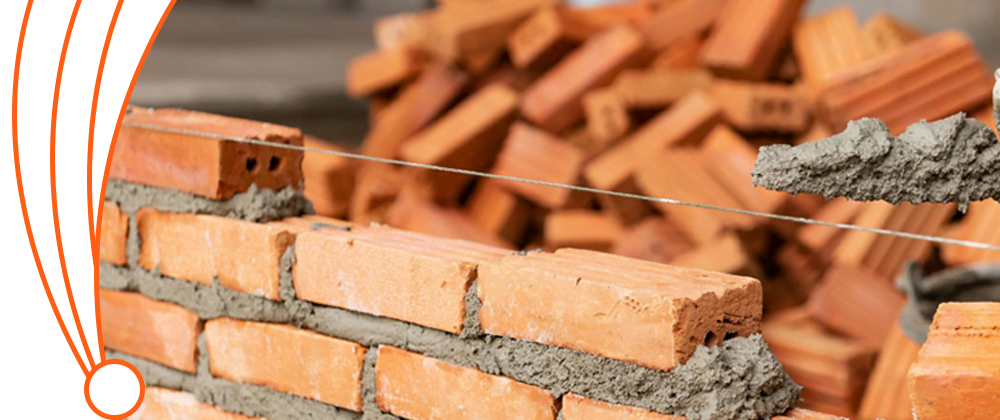
Preventative Measures for Preserving Brick Structures in NYC
Proactive preservation measures are needed to protect brick structures in NYC from environmental damage and wear. Brick Buildings are prone to harsh climates, pollution, and frequent moisture exposure that can damage their integrity. So, regular maintenance is essential.
Regular Inspections
Regular inspections of brickwork will spot early damage when cracks appear and the mortar starts to loosen. It can minimize further damage caused by neglect or climate change.
Waterproofing and Sealing
Applying a breathable, water-resistant sealant to the exterior of brick structures can prevent moisture infiltration, a major cause of deterioration. This helps protect the mortar joints and prevents issues like mold and efflorescence.
Proper Drainage Systems
Ensuring that gutters, downspouts, and drainage systems are in good condition prevents water from pooling around the brick foundation. Proper drainage reduces the risk of water seeping into the mortar joints and causing them to weaken or erode.
Re-pointing and Mortar Maintenance
The structural integrity of the brickwork requires repointing or repairing damaged mortar joints. The walls can be preserved in durability by regularly checking for gaps or cracks in the mortar and then applying new mortar.
Protecting from Pollution
Since NYC has high levels of air pollution, protecting brick surfaces from soot, dirt, and chemical contaminants is vital. Cleaning methods that remove pollutants without damaging the brick are essential for maintaining its appearance and integrity.
UV Protection
Using coatings or paint to protect brick from UV radiation can prevent color fading and mortar degradation. UV exposure can cause the mortar to dry out and crack, leading to premature aging of the structure.
Controlling Plant Growth
Vegetation such as ivy or moss on brick walls can cause moisture retention and damage to the masonry over time. Regularly removing or trimming plant growth from brick surfaces will help avoid these potential risks.
Minimizing Salt Exposure
Avoiding de-icing salts in winter and ensuring that brick structures are not exposed to saltwater runoff can prevent mortar deterioration. Salt can cause efflorescence and weaken the mortar, leading to faster wear and tear.
Challenges And Solutions Of Brick Pointing In Rainfall, Summer, Winter, and Coastal Environment
Brick pointing is the process of repairing and restoring mortar joints in brickwork and maintaining the structural integrity and appearance of brick buildings. However, plenty of environmental factors can prevent the longevity of brick pointing, such as rainfall, summer heat, winter cold, and coastal conditions. Below is a list of common challenges and their solutions.
Rainfall
- Challenge: Too much rain infiltration into mortar joints will erode them and weaken the mortar, allowing mold or algae growth. The mortar deteriorates quickly in the presence of moisture. You can learn more about the challenges of brick pointing during heavy rainfall in our detailed guide.
- Solution: They should apply water-resistant sealants to the mortar and brick surfaces to prevent moisture infiltration. To ensure proper drainage systems for your structure located in a place where rain is frequent, ensure that the rainwater around the structure flows away from it using well-maintained gutters and downspouts.
● Tip: Where moisture and water ingress have already occurred, a breathable sealant such as latex paint that allows the brick to release trapped moisture while also preventing water from entering may provide a balance between protection and moisture.
Summer
- Challenge: High temperatures and intense sunlight can cause mortar to dry too quickly, resulting in cracking and weak bonding. UV radiation also fades the color of the mortar and accelerates wear.
- Solution: Work during cooler parts of the day, such as early morning or late evening, to prevent rapid drying. Use slow-drying mortar and UV-resistant coatings to protect the mortar and bricks from sun exposure.
● Tip: In hot weather, monitor the drying process of the mortar regularly to ensure it sets evenly and take into account whether or not to place use of mortar additives to get it to dry more evenly.
Winter
- Challenge: Freezing temperatures cause moisture in mortar joints to freeze and expand, leading to cracking and further deterioration. De-icing salts used on roads can also corrode the mortar and brick.
- Solution: Inspect the brickwork before winter to ensure no cracks are present. Apply breathable sealants to prevent water from entering the joints, and avoid using de-icing salts near brick surfaces.
● Tip: If you reside in an area with very cold weather, think about setting up a protective barrier about brick surfaces, for instance, a short-term tarp or cover, to ensure they don’t have considerable mileage from excessive dampness visibility.
Coastal Environment
- Challenge: Saltwater, salty air, and high humidity in coastal areas accelerate mortar corrosion, leading to efflorescence and degradation. Salt from the ocean can weaken the mortar and damage the bricks, which makes brick pointing in coastal environments an essential practice.
- Solution: Use salt-resistant mortar for repairs and ensure regular cleaning of the brick surface to remove salt buildup. Apply protective coatings to protect the brick from moisture and salt.
● Tip: After a heavy storm or high tides, rinse the brick surfaces with fresh water to remove salt residue. This simple practice can help extend the life of brickwork in coastal areas, and for seasonal considerations, see is summer or winter better for brick pointing projects?
Protect Your Brickwork with Sardar Restoration Corp’s Expert Services
At Sardar Restoration Corp, we understand the environmental factors that can impact your brickwork and the structures they support so they remain strong and visually pleasing. To combat the damage brought on by extreme weather, moisture, air pollution, and coastal exposure, our tuckpointing experience serves you well. Our mantra is using the correct materials.
Should there ever be a need for repairs, waterproofing protections, or sealants, we do our very best to maintain the integrity of your brick pointing. Our team provides accurate estimates for brick pointing and will advise you on the ideal time for re-pointing based on the condition of your mortar joints.
Trust Sardar Restoration for reliable, efficient, and environmentally conscious brickwork care.
Wherever you are, our services are tailored to meet local needs. Contact us today at (+1) 917-355-8556 or sardarrestoration@gmail.com, or visit us at 2770 Fish Ave, Bronx, NY 10469, United States. Let us bring excellence to your next project!
FAQs
How does climate affect the durability of brick pointing?
Brick-pointing is very durable, and many climate factors contribute to the degradation of the mortar joints. The mortar itself can erode or weaken over time from temperature fluctuations, rain, and high humidity, which shows how climate affect brick pointing durability.
Is brick pointing necessary in arid regions?
While arid regions experience less rainfall, the dry climate can still cause the mortar to shrink and crack, leading to deterioration. brick pointing in arid regions remains essential in arid areas to maintain the structural integrity of the brickwork and prevent moisture infiltration.
Can Brooklyn homes withstand the effects of NYC winters with proper brick pointing?
Yes, with appropriate brick pointing, Brooklyn homes can withstand the impact of NYC winters, including freezing temperatures and the freeze-thaw cycle. Well-maintained pointing helps prevent moisture from entering the mortar joints, reducing the risk of cracks and water damage.
How does NYC’s freeze-thaw cycle impact brick-pointing durability?
NYC’s freeze-thaw cycle can significantly damage brick pointing by causing water trapped in mortar joints to freeze and expand, leading to cracks and mortar deterioration. Proper sealing and pointing techniques can minimize this damage.
How does coastal salt exposure affect brick pointing in Queens?
Coastal salt exposure in Queens accelerates the corrosion of mortar joints, leading to efflorescence and weakening of the pointing. Salt-laden air and moisture can cause mortar to break down more quickly, requiring regular maintenance and salt-resistant materials.
Why is brick pointing critical for protecting Bronx structures from water damage?
Brick-pointing ensures mortar joints are sealed and resistant to moisture infiltration. Properly maintained pointing prevents water from entering the brickwork, which could lead to mold, mildew, and structural deterioration.


